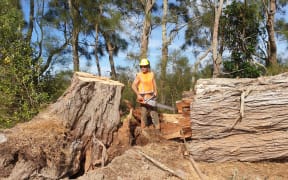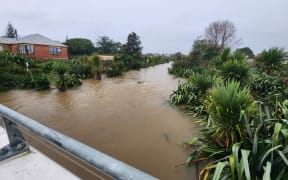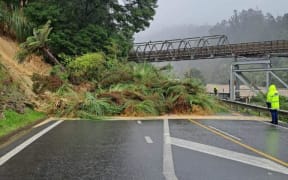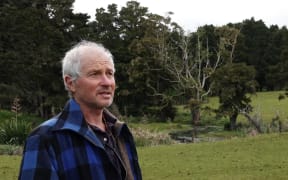
Storm-downed trees are cut into rounds by a Te Roroa kaimahi (worker). Photo: Te Roroa Commercial Development
An innovative, iwi-led scheme aims to reduce the impact of future storms in Northland while creating jobs and keeping families warm at the same time.
A record 64,000 Northlanders were left without power during Cyclone Gabrielle - some for as long as three weeks - after the February storm brought countless trees crashing down onto powerlines.
Now a project called Ngā Manga Atawhai will see the fallen trees removed from roadsides and streams, and turned into firewood for low-income households.
Trees that are still standing but threaten to bring down powerlines in the next big storm will also be removed.
The effect of Cyclone Gabrielle on road and power networks was especially severe in South Hokianga, where Rāwene fire chief Zak Bristow said his usual seven-minute drive to the fire station took several hours.
In total the volunteers spent 13 hours using chainsaws to clear a 10km stretch of highway.
"These were all well-established, mature trees that had come down from the cyclone. We had to keep the highway open so we could respond to call-outs," he said.
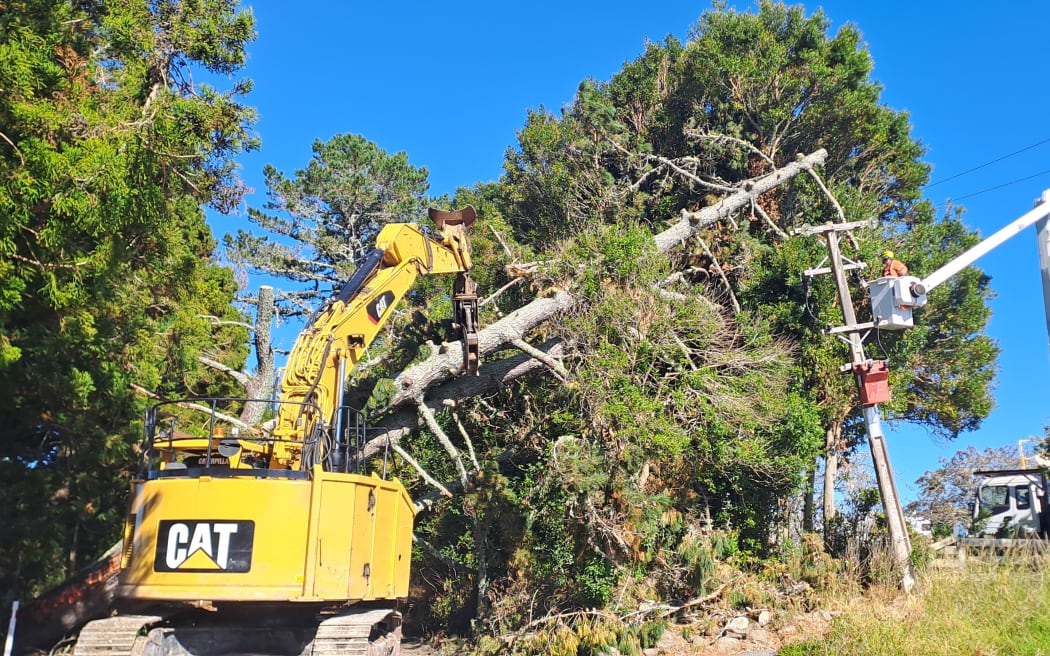
Top Energy workers remove a fallen tree from powerlines after Cyclone Gabrielle. Photo: Top Energy
Because trees were falling constantly, the firefighters often found themselves trapped in isolated pockets of highway.
If they were lucky they would be stuck with a Top Energy line crew, because in most cases the trees brought down high-voltage lines as well as blocking the road.
"So we'd have to wait for them to shut down the power before we could get on with removing the trees. It was definitely the worst I've ever seen."
The damage was so severe some areas were without power for three weeks.
Bristow said families lost food stored in freezers, trucks could not get through with fresh supplies, and the failure of cellphone sites - plus the inability to recharge phones - made communication almost impossible.
"That lack of communication caused very high anxiety amongst people wanting to know if family members were okay," he said.
The area was effectively split into separate communities, with no travel or communication between them, and each centred around a marae providing food.
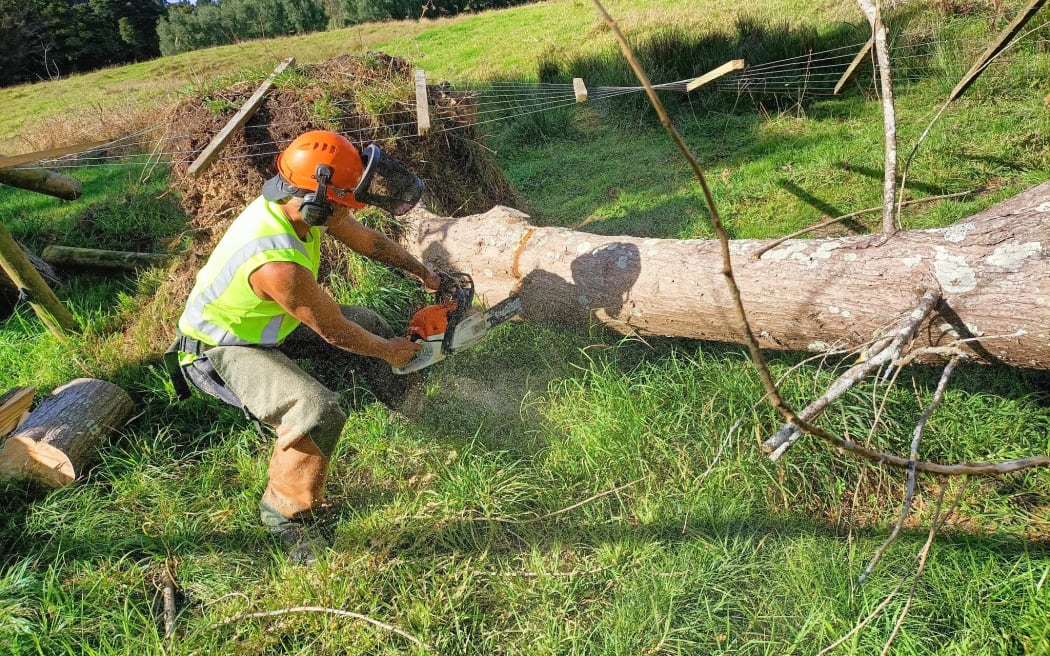
A Te Roroa kaimahi (worker) processes a fallen tree. Photo: Te Roroa Commercial Development
Northland Civil Defence Emergency Management Group chair Kelly Stratford said Ngā Manga Atawhai would improve future storm resilience by pulling together groups from across government, councils, iwi and the private sector to enable the removal of dangerous trees.
The project would make sure the wood did not go to waste, by cutting it up and giving it to low-income whānau as firewood to warm their homes.
That was especially valuable in Northland, where power costs were among the highest in the country.
Removing fallen trees from the region's steams would also reduce the risks of flooding.
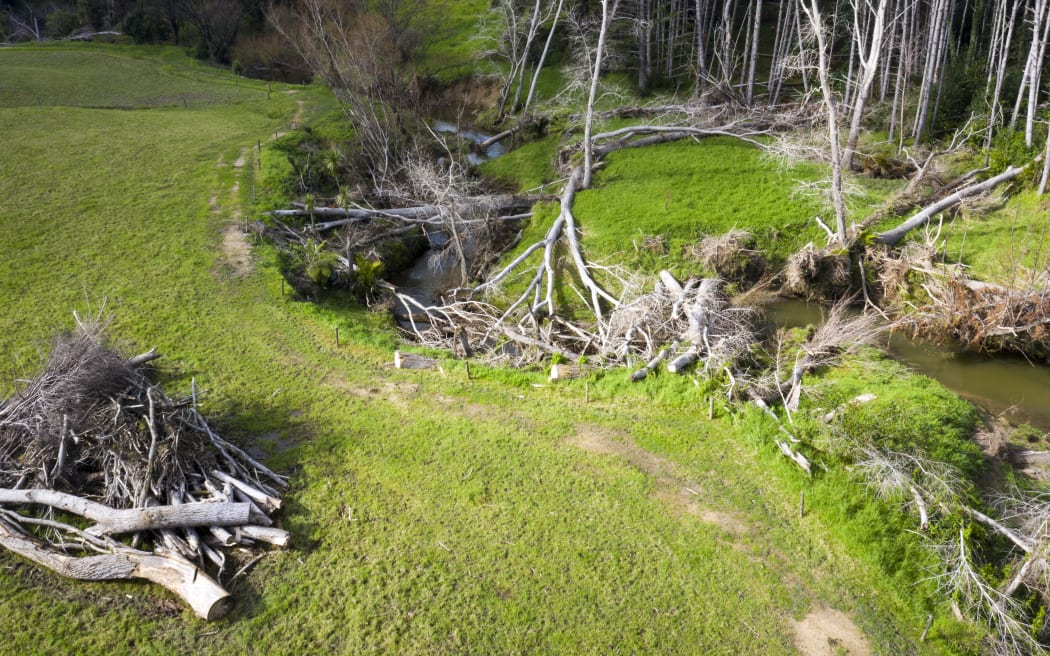
Trees removed from Paparoa River by the Northland Regional Council await processing. Photo: Northland Regional Council
Stratford, who is also the Far North's deputy mayor, said power companies and roading agencies had worked hard to restore vital services, but there was still much to be done with problem trees.
"Even though the immediate work has been done, hundreds of trees remain fallen under existing powerlines or next to roads and rivers, and thousands of standing trees remain at risk of falling over our roads, rivers, and powerlines - that's why this kaupapa is so important," Stratford said.
Only trees that had already fallen, or posed a risk to powerlines or other infrastructure, were being targeted.
The scheme was creating employment for forestry workers whose industry had been hit by the cyclone, Covid and other factors, Stratford added.
The project builds on the success of cyclone recovery work already being carried out by Northland iwi Te Roroa.
Through the Ministry of Social Development-funded Enhanced Taskforce Green, the iwi has been clearing downed trees on farmland from Auckland all the way up to Houhora, north of Kaitāia.
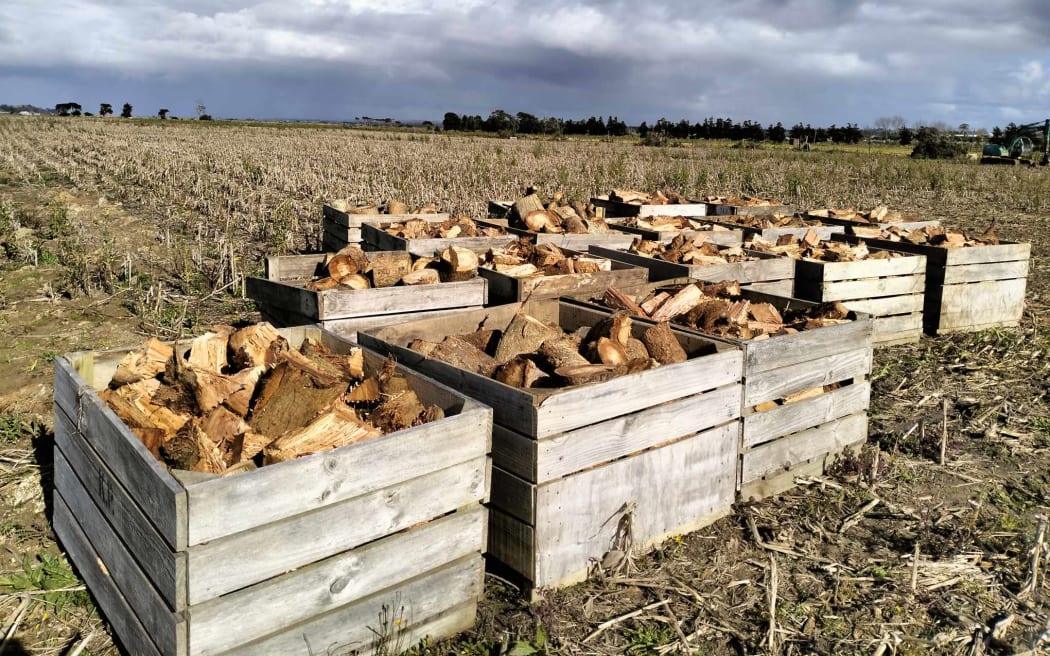
Firewood ready for distribution. Photo: Te Roroa Commercial Development
Te Roroa commercial operations manager and project lead Lindsay-Jon Clark said Northlanders were a resilient bunch, but rural communities had been hit hard by the cyclone.
The project allowed the iwi to solve several different needs within the same kaupapa, he said.
"It helps our power companies keep power on by removing problem trees, it helps our farmers, growers and the rural sector prevent tree build-up in streams and rivers, and it helps solve energy poverty within our community, meaning warmer and drier homes and more money on the table for other necessities."
Ngā Manga Atawhai also provided work for rangatahi [youth] and out-of-work forestry kaimahi [workers] in a region where jobs were scarce.
"We're not solving world peace, but this project has far-reaching and dynamic return on investment on many levels," Clark said.
Stratford said the idea for the project came out of community consultation for Cyclone Gabrielle recovery, when many people spoke of the effects of being without power for weeks on end.
So far the Ministry for Primary Industries had provided $1 million to get work underway with more funding being sought from central government.
In total the project was expected to cost about $6.5m.
While most of the firewood would be given away, some would be sold to help the project become self-sustaining.
Ngā Manga Atawhai ("The Caring Branches") will be launched on Friday 8 September with an initial focus on processing trees the Northland Regional Council has already removed from 25 rivers around the region.
